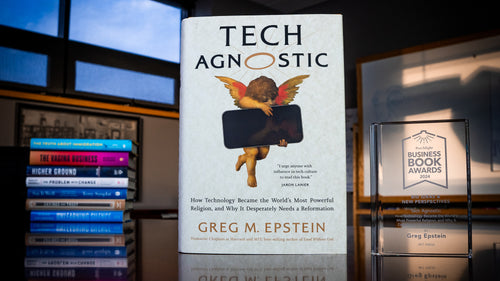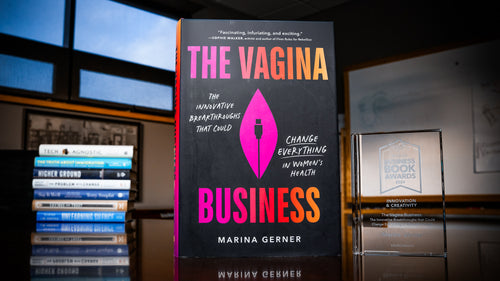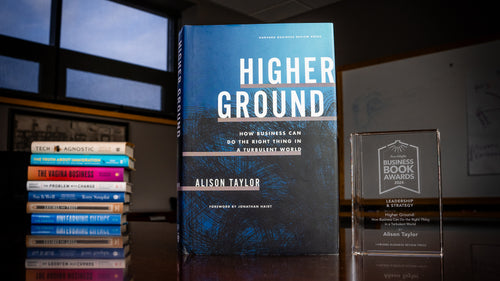In the Books - Off to the Printers II
When Ecology and Economy Meet BY KATE MYTTY Ecology and economy have finally reached a crossroads. No longer can each operate as an individual facet or separate entity, uninfluenced by the other. Like all "eco"-systems, business is changing to adapt to the changing environment. That adaptation goes by a few different names: the green revolution, sustainability, the green wave and greening, to name a few. Last year we lamented the shortage of books geared towards the intersection of business and sustainability. We postulated that with the increase of magazine and newspaper coverage on sustainability and, of course, Al Gore's film, bookstores would be ripe with "green" titles this year. The publishing industry simply needed time to catch up. As expected, 2008 brought a slew of new titles on sustainability. The range of titles and bylines touting and teaching sustainability is diverse and broad. Some challenge us to look at sustainability from an ideological standpoint and redefine what it means for a business to be sustainable, while others look at the nuts and bolts of integrating sustainable practices into a business. The authors include well-known names, such as Peter Senge (The Fifth Discipline) and David Bach (The Automatic Millionaire), and emerging voices in the genre, such as the CE-Yo of Stonyfield Farm Gary Hirshberg (Stirring It Up), John Ehrenfeld (Sustainability by Design) who worked at MIT, and Brian Dumaine (The Plot to Save the Planet) of Fortune Small Business. Some people might be turned off by the term sustainability and equate it with hippy, tree-hugging principles. But these authors are not Don Quixotes seeking to reach the impossible dreams. They are not the tree-huggers of the world. This group of authors is composed of those who study and research green efforts and those who employ green practices in their workplaces. With their books, they are educating business people on what it means when the economy can no longer function effectively without taking the natural environment into account. Perhaps the best explanation for why these books matter (and ultimately, why sustainability matters) comes from Andrew Hoffman and John Woody, who wrote Climate Change: What's Your Business Strategy: "as a business executive, you must move beyond the public debate and think about how climate change will affect your business environment. In fact, you should not think of climate change as an environmental issue at all. Instead, you should think of it as a market transition. Controls on the emission of greenhouse gases will affect the price of energy and the products, services, and sectors that rely on that energy. In other words, it will affect virtually all sectors of the economy to varying degrees. Some will be disadvantaged, but others will be advantaged. As in any market transition, there will be winners and losers" (1). In order to survive, business people must embrace sustainability. A few reoccurring themes occur in this category. First, each author believes that a green revolution is already here or is in the works. Some even call this point in time the tipping point. Second, more than a few of the authors argue that the United States is lagging behind the rest of the world in adopting sustainability principles (the United States is the only first-world countries that has yet to add its name to the Kyoto Treaty). Finally, most authors agree that this green revolution will influence our economy. Businesses that understand and prepare for the green "evolution" will capitalize on it. Those that reject it as foreign or untrue will go the way of the dinosaurs. GOING GREEN PAYS OFF Going green is not as foreign as it may seem. As Joel Makower, author of Strategies for the Green Economy and editor of GreenBiz.com, points out, "Companies in nearly every sector are continually improving their efficiency, engineering waste, inefficiency, and toxicity out of their manufacturing and distribution processes. Many companies have learned how to deliver products and their functionality using far fewer resources; a few have upended their business models in the name of resource efficiency and enhanced productivity. They do these things partly because of the reduced environmental impact but largely because they make good business sense" (31). The process of becoming less wasteful and more sustainable is already integrated into most business practices. This market transition, as Hoffman and Woody deem it, challenges businesses to be even more resourceful. As with any new transition, sustainability must begin on an individual level. David Bach's Go Green, Live Rich is a good starting point. Bach takes his usual personal finance approach and outlines 140 steps an individual can take to save money by going green. One chapter in particular is dedicated to how to do the same in a business. By putting a savings amount on each of the 140 steps, Bach uncovers just how much there is to be gained by pursuing sustainability. It doesn't take much to start. For instance, you could "save $2,250 a year by brown-bagging your lunch. Together, we'll reduce our landfills by 1.8 million tons of trash" (117). Bach shows that even simple changes on an individual level can save money and be more environmentally friendly. Imagine what's possible on a larger scale. In Stirring It Up, Gary Hirshberg, shows how companies are capitalizing on sustainability. Take Adobe Systems—a $2 billion company. It spent $1.1 million on "motion-sensing light switches, waterless urinals, automatic faucets, and fluorescent lights, among other things, which paid for themselves in just over a year and now continue to add millions to Adobe's bottom line." (68) There is much opportunity is to be had by going green. THE MEASUREMENT FOR GREENNESS But how much is enough? What does a green business look like? One of the challenges associated with the green revolution is there remains no common definition for what it means to be sustainable or even a way to measure sustainability. It is difficult to change or effect change if we have no way to measure progress or define success. And the traditional places we look to for good examples, don't necessarily have the answers. Hirshberg, who knows the agricultural business well, hangs up agriculture's approach as a model of inefficiency—though most would assume agriculture to be incredibly efficient. "Some analysts calculate that typical food producers use ten to fifteen calories of fossil-fuel energy to produce every single calorie of food energy they sell. By any standard, economic or environmental that's ridiculous—a suicidal ride to bankruptcy via inefficiency. But because the industry's conventional accounting method adds up only dollars, not energy—or, for that matter, any so-called externalized costs, such as resource depletion, pollution or the demise of farmers—agribusiness is wrongly deemed 'efficient'" (5)." The day is coming when a common measurement will be used. Already, Woody and Hoffman explain in Climate Change that the Investors and Business for U.S. Climate Action asked the Securities and Exchange Commission to outline to what extent companies should account for their effects on the environment in their financial reports. Theoretically, when this measurement is found, it'll ripple through organizations accounting departments similar to Sarbanes-Oxley. Until that measurement is found, Makower suggests starting with these three questions.
- What do you know? How and where does your company affect the environment? What about upstream in your supply chain—your suppliers, their suppliers' suppliers? And downstream, how does your customers' use and disposal of your product or service affect the environment?
- What are you doing? Now that you know where you stand, the next step is to figure out where it's possible to incorporate more sustainable practices.
- What are you saying? What message are your spreading to your customers and stakeholders about your company's green practices? (Strategies for the Green Economy, 115)



